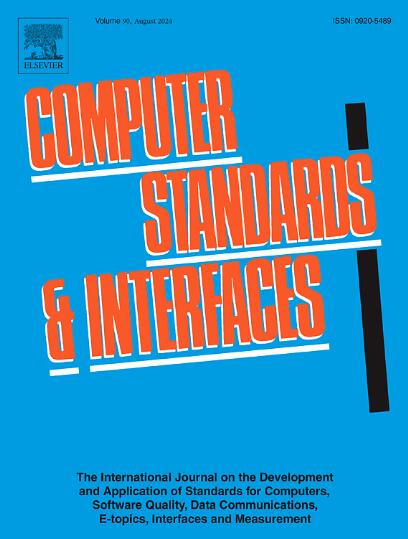Securing Wireless Body Area Network with lightweight certificateless signcryption scheme using equality test
IF 3.1
2区 计算机科学
Q1 COMPUTER SCIENCE, HARDWARE & ARCHITECTURE
引用次数: 0
Abstract
The growth of Internet of Things (IoT) technologies, such as cloud computing, 5G communication, and wireless sensor networks, is driving a smarter and more connected future. Thousands of terabytes of data are uploaded to cloud servers each day for storage or computation. Due to data privacy, we cannot upload personal pictures, videos, locations, and medical records directly to the cloud because they will be at risk if compromised. Due to the untrusted nature of the cloud, data needs to be encrypted to ensure confidentiality before being outsourced to it. The data must first be decrypted before any operation can be performed, which can be resource-intensive and wasteful. Secure data transmission from sensors to an Internet host becomes a critical issue for the success of IoT. To address these issues, this paper introduces a lightweight certificateless signcryption scheme with an equality test (CLS-ET), which leverages the power of hyperelliptic curves. This scheme obtains the security goals of authentication, integrity, confidentiality, and non-repudiation in one logical step. Furthermore, this scheme enables us to verify whether two ciphertexts are encrypted with the same or different keys that contain the same information without decrypting them. Indistinguishability under adaptive chosen ciphertext attack (IND-CCA2), existential unforgeability under chosen message attack (EUF-CMA), and one-wayness under adaptive chosen ciphertext attack (OW-CCA2) level security have been achieved by the proposed scheme in the Random Oracle Model (ROM). Furthermore, we compared our proposed scheme with other existing state-of-the-art schemes. While maintaining security and functionality, our scheme reduces computation costs for encryption, decryption, and testing stages, thereby improving efficiency in resource-constrained IoT-enabled Wireless Body Area Networks.
使用相等性测试的轻量级无证书签名加密方案保护无线体域网络
物联网(IoT)技术的发展,如云计算、5G通信和无线传感器网络,正在推动一个更智能、更互联的未来。每天有数千兆字节的数据上传到云服务器进行存储或计算。由于数据隐私,我们不能将个人图片、视频、位置和医疗记录直接上传到云端,因为一旦泄露,这些信息将面临风险。由于云的不可信性质,在外包给云之前,需要对数据进行加密以确保机密性。在执行任何操作之前,必须首先对数据进行解密,这可能是资源密集型和浪费的。从传感器到互联网主机的安全数据传输成为物联网成功的关键问题。为了解决这些问题,本文引入了一种轻量级的带等式检验的无证书签名加密方案(CLS-ET),该方案利用了超椭圆曲线的力量。该方案在一个逻辑步骤中实现了认证、完整性、机密性和不可抵赖性的安全目标。此外,该方案使我们能够在不解密的情况下验证两个密文是否使用包含相同信息的相同或不同密钥进行加密。该方案在随机Oracle模型(ROM)中实现了自适应选择密文攻击(IND-CCA2)下的不可区分性、选择消息攻击(EUF-CMA)下的存在不可伪造性和自适应选择密文攻击(low - cca2)下的单向安全性。此外,我们将建议的方案与其他现有最先进的方案进行比较。在保持安全性和功能性的同时,我们的方案减少了加密、解密和测试阶段的计算成本,从而提高了资源受限的物联网无线体域网络的效率。
本文章由计算机程序翻译,如有差异,请以英文原文为准。
求助全文
约1分钟内获得全文
求助全文
来源期刊

Computer Standards & Interfaces
工程技术-计算机:软件工程
CiteScore
11.90
自引率
16.00%
发文量
67
审稿时长
6 months
期刊介绍:
The quality of software, well-defined interfaces (hardware and software), the process of digitalisation, and accepted standards in these fields are essential for building and exploiting complex computing, communication, multimedia and measuring systems. Standards can simplify the design and construction of individual hardware and software components and help to ensure satisfactory interworking.
Computer Standards & Interfaces is an international journal dealing specifically with these topics.
The journal
• Provides information about activities and progress on the definition of computer standards, software quality, interfaces and methods, at national, European and international levels
• Publishes critical comments on standards and standards activities
• Disseminates user''s experiences and case studies in the application and exploitation of established or emerging standards, interfaces and methods
• Offers a forum for discussion on actual projects, standards, interfaces and methods by recognised experts
• Stimulates relevant research by providing a specialised refereed medium.
 求助内容:
求助内容: 应助结果提醒方式:
应助结果提醒方式:


